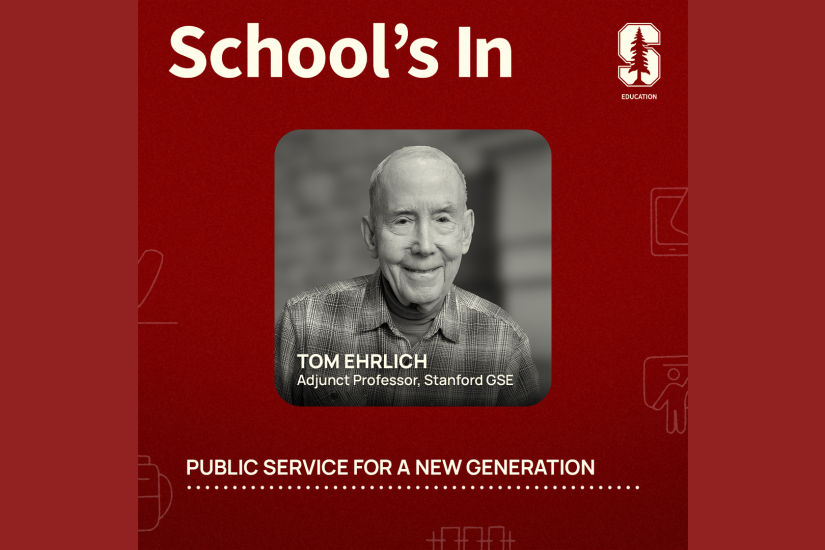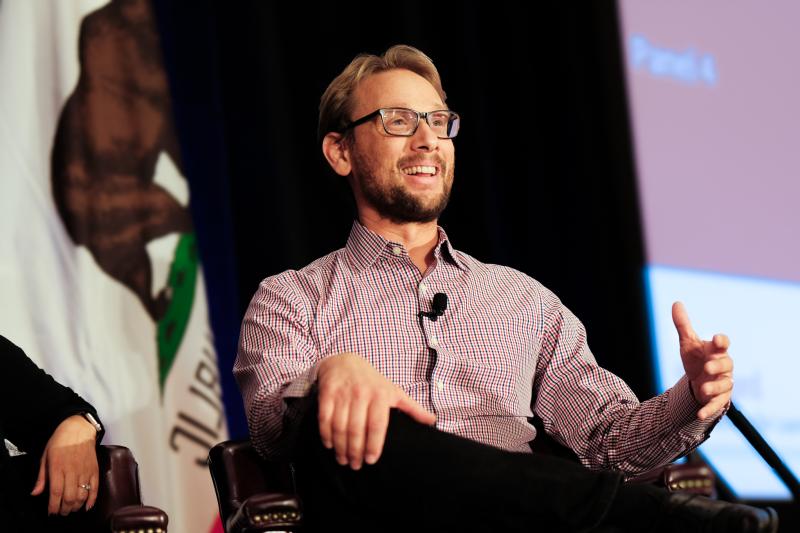
New standards in pipeline for science education
As Common Core language arts and math standards take center stage, there is a separate reform initiative waiting halfway in the wings. The Next Generation Science Standards could represent a significant shift in how K12 science is taught across the United States. The details of the new standards, currently under consideration by many states, are not nearly as well defined as those for Common Core.
Graduate School of Education professor Jonathan Osborne, one of the authors of the document that was the roadmap for NGSS, recently discussed the new guidelines and their likely impact on teachers and students with writer David Plotnikoff. What follows is an edited excerpt of the interview.
Q: The Next Generation Science Standards are being driven by a nationwide group of state-level administrators —the same people behind Common Core. Why was this process started in the first place?
Osborne: Education is a system, so if you look at it from a policy perspective, you say "How can we make it function more effectively?" If we all set different expectations and there is no common dialogue about what we think is reasonable for students to attain, that's not very efficient. Science was kind of at the tail end of this discussion.
Q: The process involved some 40 writers, years of input from assorted stakeholders and many revisions. And the end product looks like a 50-page PowerPoint slideshow. Who's going to read this?
Osborne: The NGSS is not a document to be read. The only reason you would is if you're a teacher and want to know what you're going to be teaching and what are the performance expectations.
Q: Although the standards have been "finalized," how close are we to seeing them deployed in the classroom?
Osborne: There's still quite some way to go. Maybe 2015 or 2016. Seven states, including California, have adopted it, and there is likely to be 13 by the beginning of 2014. It's uncertain how many states will ultimately adopt it.
Q: So each of the states may end up with its own version of NGSS?
Osborne: It'll be variations on a theme. The core of it will still be there. It was recommended that the states adopt it as a whole rather than piecemeal, but there's no guarantee they'll do that.
Q: What happens after a state signs on?
Osborne: There are a whole lot of disparate things that have to happen, and they're going to happen in a somewhat erratic fashion. One of them is the development of assessment. With Common Core math and language arts there was $350 million put into assessment. It doesn't look like anywhere near that amount is going to come forward for science. And nobody's quite clear who's going to develop that.
Q: What's wrong with the science standards now in place?
Osborne: The dominant paradigm about teaching science that has existed since the early '90s was this notion of teaching science through inquiry. And the problem was they defined that in a way where a teacher could take any one bit of the definition and say, "Yes, I am meeting the requirement." In practice, "teaching science using inquiry" got reduced to teaching science using hands-on experiences. And that's not what teaching science is about.
Q: Why do you think that hands-on experience isn't a sufficient basis for our approach to teaching science?
Osborne: Science is basically a set of ideas about the material world. Hands-on experiences are just one way of illuminating the ideas. What we have attempted to do with the new framework is to say building these ideas requires you to engage in a set of scientific practices - asking questions, developing models, constructing explanations, analyzing and interpreting data. You're not doing a very good job of teaching science if you're not having your students engage in all these practices. And you're giving your students a very distorted vision of what science is all about.
People tend to think of doing science as doing experiments. Testing things. Yes, there is some degree of that. But you need to engage in reading it, writing it, talking about it, constructing models.
Osborne offers an alternative: Teach science through argument.
Q: Is the "scientific method" model — implying some unified, universal process — still the prevailing one in K12?
Osborne: Yeah. It's terrible. It's riddled into the fabric of science teaching. The reason that people like myself complain about that so much is this: You have a hypothesis, you make a prediction and then you devise an experiment to test that prediction. But so much of science - from geology to astrophysics — does not involve doing that kind of experimentation. The idea that the scientific method is some sort of routine algorithm that scientists apply really undermines all that is creative in science.
Q: Particularly in the middle grades, when students are forming critical attitudes about science and their own pursuit of it, they seem to ask "Why do I need to know this?" rather than "How did we come to know this?"
Osborne: The answer is, essentially, you don't know what's going to be valuable to you. As a friend likes to point out, maybe 99 percent of what you learn in school may be useless, but that remaining one percent can put a man on the moon. So somebody, somewhere, has decided that this is a good thing for you to know. As a teacher I need to go beyond that and construct a rationale. You take a phenomenon and ask "isn't that odd?" and "why does that happen?" And hopefully you instill a sense of wonder. And if you can't do that, then should you really be teaching science?
David Plotnikoff writes frequently for the Graduate School of Education.



